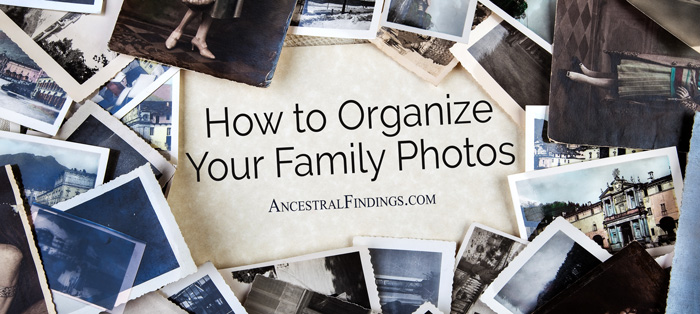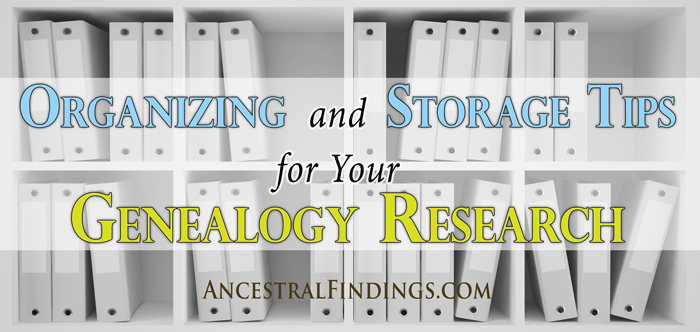In addition to your digital genealogical information, there will also be physical genealogy items you will need to organize. Physical items in genealogy can be anything from hard copies of documents and photographs to heirlooms made or owned by your ancestors. Obviously, these will not be able to go on your computer. The good news is that there are excellent and wonderfully simple ways of organizing these things, as well. These are some tips on doing it so that you and the future generations of your family will be able to locate, use, and enjoy them to the maximum possible extent.
3. Create Genealogy Binders for Surnames and Individuals
Just like what you did with the electronic folders on your computer, you can create a similar way of organizing your genealogy with three-ring binders. This is an excellent way of organizing physical copies of documents such as birth certificates, death certificates, marriage certificates, military records (such as enlistment, service, or discharge papers, etc.), newspaper clippings and articles, deeds to houses that your ancestors once owned, property surveys, and even individual pages from guest books for anniversary parties, funerals, and weddings, and individual pages from baby books. Basically, pretty much any physical paper or paper product item (like cardboard) that you can collect that is connected to your genealogy research can be organized this way.
This is what you do:
- Get as many three-ring binders as you need for all the documents you want to organize. You will be organizing by family surname, and by individual people (if anyone person has enough physical documentation to warrant their own individual binder). Ideally, these will be white binders with plastic pockets on the front and side.
- Print up a sheet of paper for the front pocket and the side pocket (you will have to trim it to size to fit) with the surname of the family or the individual name of the person. Once you’ve inserted the paper on the front and side, you will easily be able to find the correct binder on a bookshelf.
- Purchase archival-safe plastic sheet protectors that are hole-punched for three-ring binders. You will be putting your documents in these.
- Purchase archival-safe linen paper and double-stick tape.
- Center documents on the archival-safe linen paper and secure them with tape. If you can find the archival-safe tape, all the better.
- Use a Sharpie or regular ink pen to write a description of the document either above or below it on the paper. If you can create the spacing to do it, you can put the paper through your printer and print out the label above or below the document, using a fancy font, if you like.
- Put the paper with the document on it in the plastic sheet protector.
- Organize the documents by document type. Within each document type, organize alphabetically by date, from earliest to latest. So, if you have several marriage records, make a marriage record category in the binder, and put the sheet protectors in alphabetically by name, starting with the earliest ones to the latest ones.
- If you are doing a surname binder instead of an individual person binder, make a separate section in your binder for each individual person within that surname, and organize the sheet protectors as you otherwise would. You may write or print sheets to include in the binder to name the individuals and categories if you like. It’s a nice touch and definitely helps with the organization.
- Arrange binders alphabetically by surname on a bookshelf. With individuals with their own binders within a surname, put the general surname binder on the shelf first, with individual binders coming after, arranged alphabetically by the first name.
4. Organizing the Heirlooms
You may collect some large objects associated with your ancestors along the way in your genealogical journey. When people find out there is a genealogist in the family, they tend to want to give you things that they no longer have room for in their homes, or that they no longer want to be responsible for.
They will usually ask you to take these things with words to the effect of they know you will keep them safe and in good condition for future generations, or that you will keep them just like their original owner would want you to. You may have already experienced this phenomenon and have a few family heirlooms in your house.
Heirlooms are any physical object associated with your ancestor that does not fit into the category of documentation. Anything from old wedding rings (or other jewelry) to antique china or silverware sets to actual antique furniture may be sent your way by well-meaning relatives who know you are the family historian. What do you do with them all?
When it comes to smaller objects, you can find a variety of creative ways to display them, such as in bookcases or china cabinets. You can make little cards or labels to be placed on, beside, or in front of them that say who these objects belonged to, and what the approximate date of manufacture is for the object (or the approximate date it came into the family if you don’t know the manufacture date). You can also pack them away for future generations, with similar labeling, but it is more fun for most genealogists to display them in some way.
The same thing goes for furniture. Display it or store it with proper labeling on it or nearby.
You will want to make plans for it in the future, naturally. These are objects that are important to your family history and maybe valuable (and even if not, they will have sentimental value). You will want to make sure they stay safe. The best way to do this is to either make sure these heirlooms are handed down via official documentation to trusted family members of the younger generation or to make plans for them to one day be donated to a local or national museum or archives.






